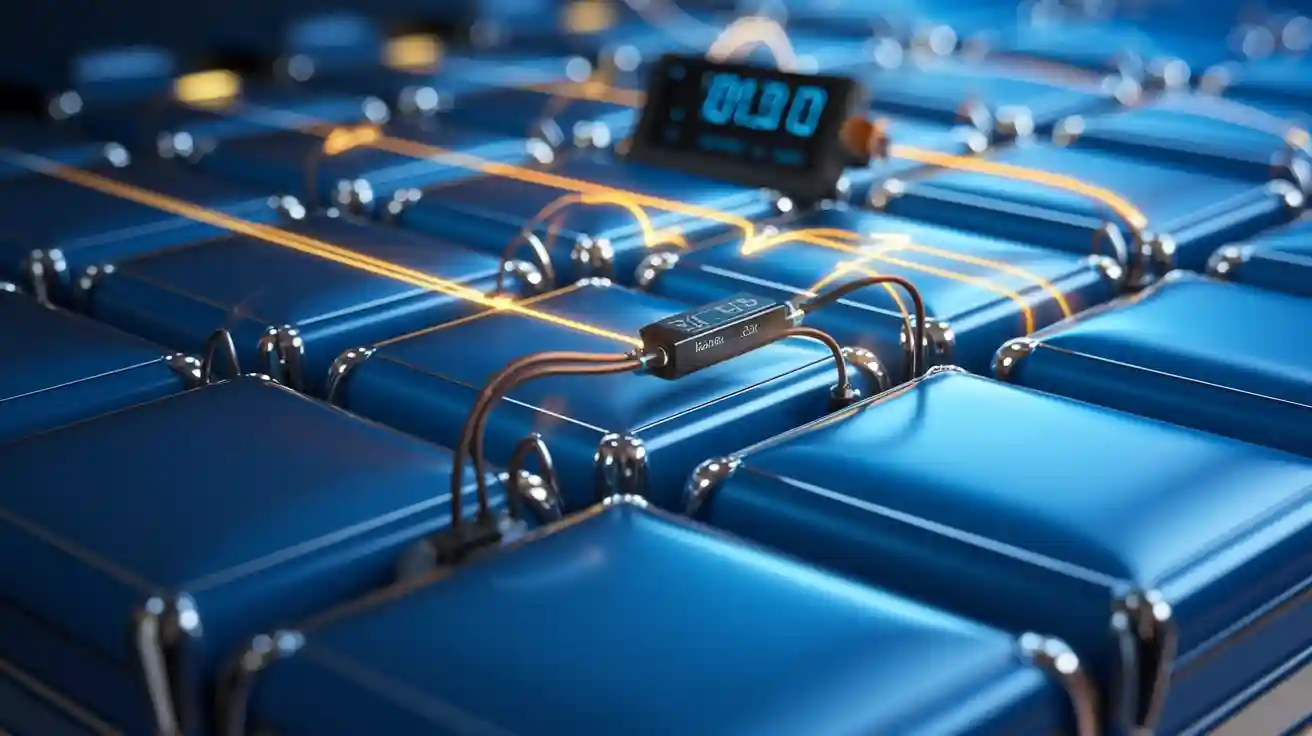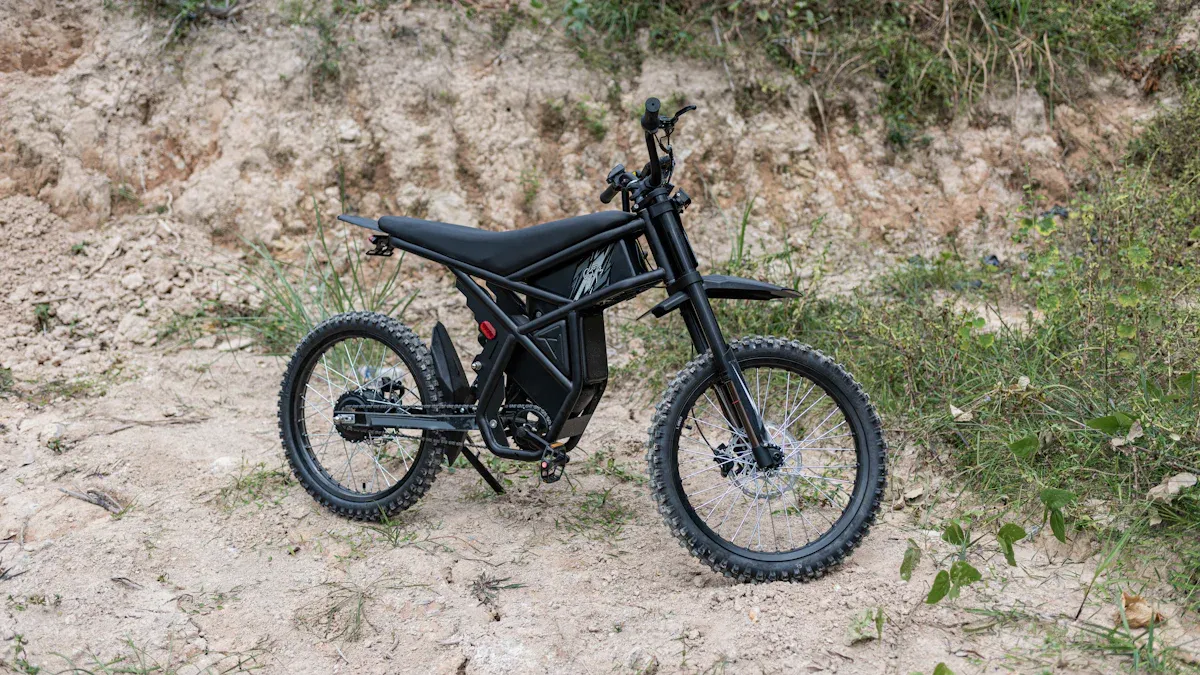
When you use a lithium-ion battery, you want the longest battery life possible. Battery balancing keeps each lithium cell working together, which helps battery longevity and keeps your battery safe. Take a look at how balancing matters:
| Aspect | Impact on Safety and Performance |
|---|---|
| Cell Imbalance | Increases safety risks and lowers battery life. |
| Balancing Methods | Active balancing gives better battery performance and longer life. |
A well-balanced lithium-ion battery means you get more out of every charge, boost battery life, and improve longevity. Simple balancing steps can make your battery life last much longer. If you care about battery life, battery balancing is key to the life of your lithium-ion battery. With the right balancing, you protect battery life, improve performance, and add years to the life of your lithium battery. You can get the best battery life by using lithium-ion battery balancers and good balancing habits. Remember, battery balancing is your best tool for long battery life and top lithium performance. Make battery balancing a regular part of your battery life routine, and you will see the life of your lithium-ion battery improve.
Battery Balancing Basics

What Is Battery Balancing
You may wonder what battery balancing means for your lithium-ion battery. Battery balancing keeps all the cells in your battery at the same charge level. Each cell in a lithium battery can charge and discharge at a different rate. Over time, this difference can cause some cells to have more charge than others. If you do not balance your battery, some cells may overcharge or over-discharge. This can lower battery life and reduce performance.
- Battery balancing works by:
- Monitoring the voltage or state of charge in each cell.
- Redistributing or removing energy to keep all cells equal.
- Using methods like passive balancing, active balancing, or software-based balancing.
Passive balancing uses resistors to burn off extra energy as heat. Active balancing moves energy from one cell to another. Software-based balancing uses smart systems to manage charge. Most balancing happens during charging, especially when the battery is almost full. This process helps every cell reach full charge at the same time. You get the most out of your battery capacity and improve battery life.
Pourquoi c'est important
Battery balancing is not just a technical detail. It is a key part of battery longevity and safety. When you keep your lithium-ion battery balanced, you protect each cell from damage. You also make sure your battery gives you the best performance and longest life.
Tip: Balanced batteries last longer and work better. Make battery balancing a regular habit for your lithium-ion battery.
Here are some reasons why battery balancing matters:
- It prevents overcharging and over-discharging, which can damage cells and shorten battery life.
- It helps all cells reach full capacity, so you get the most energy from your battery.
- It improves battery performance by making sure no single cell limits the battery.
- It keeps your battery safe by lowering the risk of overheating or fire.
- It extends the lifespan of your lithium battery, giving you more cycles and better value.
You need battery balancing for every lithium-ion battery, from electric vehicles to phones. Without balancing, your battery life drops, and you risk losing capacity and performance. Make battery balancing part of your routine to protect your battery and enjoy longer life.
Risks of Imbalance

Causes of Imbalance
You may notice that not all lithium-ion battery cells age or perform the same. Small differences in how each cell is made can cause imbalance. Manufacturing imperfections, like changes in material or assembly, lead to cells with different capacities and resistance. Temperature changes inside the battery pack also make some cells work harder than others. Over time, this causes some cells to lose charge faster or age more quickly. If you store your battery for a long time or use it in harsh conditions, self-discharge and uneven aging get worse. Even small defects, such as copper particles, can speed up cell damage and create safety risks.
- Common causes of imbalance:
- Manufacturing differences in cell size, material, or assembly
- Temperature gradients inside the battery pack
- Aging and different use patterns
- Variations in self-discharge rates
- Internal resistance differences
Effects on Battery Longevity
Imbalance in your lithium-ion battery can shorten battery life and reduce performance. When one cell charges or discharges faster, it reaches its voltage limit before the others. This forces the battery management system to stop charging or discharging early, so you lose usable capacity. Cells that hit their limits first wear out faster, which means your battery life drops. Over time, this weakens the whole battery pack and lowers battery longevity. Imbalance also increases the risk of overheating, which can lead to dangerous situations like thermal runaway or even fire. If you want to protect battery life and get the best performance, you need regular battery balancing.
Note: Without proper balancing, weaker cells degrade faster and limit the battery lifespan. Active balancing systems help by moving energy between cells, reducing stress and extending battery life.
Signes d'alerte
You can spot imbalance in your lithium-ion battery by watching for these signs:
- Les battery charges too fast and stops early, giving you less run time.
- Les state of charge display acts strangely, with sudden drops or jumps.
- You notice shorter battery life or reduced range.
- The battery shuts down during normal use, even when it seems charged.
- After charging, you get low voltage warnings.
If you see these warning signs, your battery needs balancing. Regular battery balancing keeps your lithium cells healthy and helps you get the most life and performance from your battery.
Balancing Methods
Passive Balancing
You can use passive balancing to help your lithium battery last longer. This method works by removing extra charge from cells with higher voltage. The system uses resistors to turn this extra energy into heat. You will find passive balancing in many small or low-cost battery packs because it is simple and affordable.
| Aspect | Passive Balancing |
|---|---|
| Principle | Dissipates excess energy as heat through resistors |
| Efficiency | Less efficient due to energy loss as heat |
| Complexity | Simpler, less expensive |
| Speed & Accuracy | Slower and less accurate |
| Suitability | Small or low-power battery packs |
| Production de chaleur | Generates heat requiring cooling in large systems |
| Impact on Battery Life | Maintains equal state of charge but less effective |
| Exemples d'application | Small battery packs, low-cost systems |
Passive balancing helps keep all cells at a similar charge level. This process prevents overcharging and over-discharging, which protects your battery and extends its life. You will notice that passive balancing is not very efficient because it wastes energy as heat. This method works best for small batteries where cost and simplicity matter more than efficiency.
Note: Passive balancing improves battery safety by keeping cells within safe voltage ranges. It also reduces the risk of overheating and voltage reversal, which can damage your battery and shorten its life.
When you use passive balancing, you make sure your battery operates safely and lasts longer. However, you may lose some energy during the balancing process. This method does not work as well for large or high-capacity lithium batteries because it cannot balance quickly or efficiently enough.
Active Balancing
Active balancing gives you a more advanced way to manage your lithium battery. This method moves energy from cells with more charge to those with less. It uses special circuits, like inductors or capacitors, to transfer energy instead of wasting it as heat. You will see active balancing in electric vehicles and other high-power systems where battery life and performance matter most.
| Aspect | Active Balancing |
|---|---|
| Principle | Redistributes charge between cells using dedicated circuitry |
| Efficiency | More efficient with minimal energy loss |
| Complexity | More complex, costly hardware required |
| Speed & Accuracy | Faster and more accurate |
| Suitability | High-power applications like electric vehicles |
| Production de chaleur | Minimal heat generation |
| Impact on Battery Life | Extends battery life by better charge distribution |
| Exemples d'application | Electric vehicles, home energy storage, high current systems |
Active balancing helps you get the most out of your battery. It keeps all cells at the same charge level, which means you use more of your battery’s capacity. This method also reduces heat, shortens charging time, and improves battery performance. You will find that active balancing costs more and needs more complex parts, but it pays off in longer battery life and better system performance.
- Benefits of active balancing:
- Transfers energy between cells, so you do not waste power.
- Works well for large lithium batteries and high-power uses.
- Extends battery life by keeping all cells healthy.
- Improves battery performance and lets you use more capacity.
Tip: If you need high efficiency and long battery life, choose active balancing for your lithium battery system.
Role of BMS
A battery management system (BMS) helps you keep your lithium battery safe and balanced. The BMS watches each cell’s voltage, current, and temperature. It finds cells that are out of balance and uses either passive or active balancing to fix the problem.
- The BMS checks each cell for differences in voltage and state of charge.
- It uses sensors and smart circuits to monitor your battery in real time.
- When it finds an imbalance, the BMS starts balancing to protect your battery.
- Passive balancing in the BMS removes extra charge from high-voltage cells by turning it into heat.
- Active balancing in the BMS moves energy from stronger cells to weaker ones, making the process faster and more efficient.
You need a good BMS to get the best life and performance from your lithium battery. The BMS keeps your cells balanced, stops overcharging and over-discharging, and helps prevent dangerous situations like overheating or fire. With a smart BMS, you can use your battery longer and get more out of every charge.
Remember: A reliable battery management system is your best tool for safe, long-lasting lithium batteries. It protects your investment and helps you enjoy better battery performance and longer life.
Maximizing Battery Longevity
Identifying Imbalance
You can spot imbalance in your lithium-ion battery by using several methods. Some methods use voltage differences between cells, while others use advanced tools to estimate the state of charge. The table below shows common ways to find imbalance and their strengths:
| Method/Approach | Description | Advantages/Limitations |
|---|---|---|
| Voltage-based methods | Use cell voltage differences to detect imbalance | Simple but less effective for some lithium batteries; needs high accuracy |
| SOC Estimation (EKF) | Estimates state of charge for each cell | More efficient if accurate; complex for daily use |
| Mean-Difference Model | Finds SOC differences among cells | Advanced but not common in vehicles |
| Empirical Mode Decomposition | Finds faults under different conditions | Works well for many situations |
| DBSCAN Clustering | Groups voltage data to find bad cells | More accurate than basic methods |
| Voltage Compensation | Uses max/min cell voltages for imbalance | Gives both rough and precise results |
| Deep Learning | Uses data to predict imbalance | New and powerful, but needs lots of data |
You may notice your battery charges too fast, loses life, or shows strange readings. These signs often mean your lithium-ion battery needs balancing. If you use a battery management system, it can help you find and fix imbalance quickly, which protects battery life and improves performance.
Maintenance Tips
You can keep your lithium-ion battery healthy and extend its life by following these steps:
- Charge your battery slowly with a charger made for lithium batteries. Use a charger rated at about one-fourth of your battery’s capacity.
- For daily use, stop charging at 80% to protect battery longevity. Only charge to full when you need maximum capacity.
- Avoid letting your battery drop below 25%. Recharge before it gets too low to keep capacity strong.
- Store your battery at about 50% charge in a cool, dry place. This helps prevent loss of life and corrosion.
- Clean the battery terminals with a soft cloth to stop corrosion.
- Watch your battery’s charge and run time. If you see changes, check for imbalance or loss of life.
- Replace your battery if capacity drops below 80% or if charging takes much longer.
- Use your battery gently. Avoid high-drain activities and check unused batteries often to stop self-discharge.
Tip: Good maintenance and regular battery balancing help you get the most life and best performance from your lithium-ion battery.
Choosing a Balancer
When you pick a balancer or battery management system for your lithium-ion battery, you should look for features that match your needs:
- Choose a balancer that fits your battery’s voltage and capacity. Make sure it supports your lithium battery type.
- Look for accurate state of charge and health measurement. This helps you plan and avoid deep discharge, which protects battery life.
- Pick a system with cell balancing to keep all cells at the same charge. Active balancing works best for high-performance needs, while passive balancing suits smaller or less costly systems.
- Make sure the balancer has safety features like overvoltage, undervoltage, and temperature protection. These features prevent damage and keep your battery safe.
- Check the operating temperature range. Some balancers work better in extreme heat or cold.
- For electric vehicles or robotics, choose a balancer with fast response and strong communication, like CANBus.
- If you use your battery for home storage or renewable energy, look for a balancer that supports long life and easy maintenance.
- Consider the brand, quality, and certifications. Good support and warranty help you get the most out of your battery.
Popular brands like ECO-WORTHY, LiTime, iSunergy, and Victron offer balancers for different lithium-ion battery needs. Each brand supports various voltages and balancing currents, so you can find one that fits your system.
Remember: The right balancer and good battery balancing habits give you longer battery life, better performance, and more value from your lithium-ion battery.
You can extend the life of your lithium-ion battery by keeping cells balanced and following smart care habits. Balancing improves battery life, boosts performance, and protects capacity.
- Charge slowly, avoid full charges, and store lithium batteries in cool places to increase longevity.
- Utilisation active balancing for high-power needs, as it improves energy efficiency and battery life.
Proactive battery care lowers costs and helps you get the most life and capacity from every lithium battery. Make battery balancing part of your routine to enjoy longer battery life and better performance.
FAQ
How often should you balance your lithium-ion battery?
You should balance your lithium-ion battery every few months or when you notice a drop in capacity. If you use your battery daily, check it more often. Regular balancing helps you keep all cells healthy and maintain full capacity.
Can balancing increase the capacity of your lithium-ion battery?
Balancing does not increase the original capacity. It helps you use the full capacity that your lithium-ion battery already has. When all cells stay balanced, you get the most energy from your battery and avoid losing capacity over time.
What happens if you never balance your lithium-ion battery?
If you never balance your lithium-ion battery, some cells lose capacity faster. You may see shorter run times and less total capacity. The battery can also become unsafe. Balancing protects your lithium battery and keeps capacity strong.
Do all lithium batteries need a balancer?
Most lithium batteries, especially large ones, need a balancer. Small lithium-ion battery packs may have built-in balancing. If you want to keep capacity high and your battery safe, use a balancer for your lithium-ion battery.
How do you know if your lithium-ion battery has lost capacity?
You may notice your device runs out of power faster or charges too quickly. If your lithium-ion battery cannot hold its charge or the capacity drops below 80%, it has lost capacity. Use a balancer to help slow this loss.

